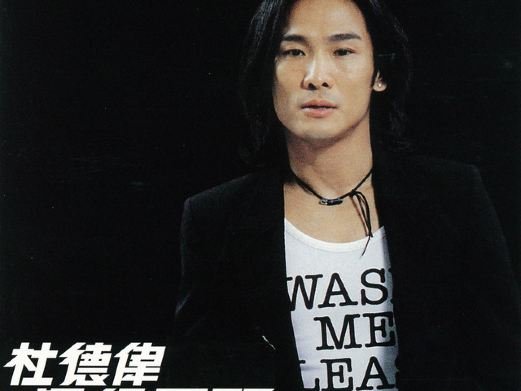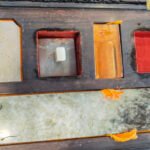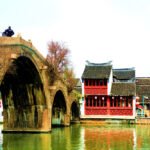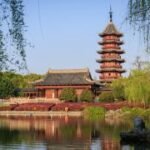Ci Yun Chan Temple was established during the Song Xiancun period (A.D. 1265-1274). It was reconstructed during the Ming Zhengtong era (1436-1449) and was formerly known as Guangji Temple. From the Ming Wanli to the Qing Kangxi, Qianlong, and Daoguang dynasties, the temple was expanded with additional halls and pavilions, becoming a larger Buddhist monastery within Wujiang City (County). It has been home to many eminent monks throughout the ages, including Dao Ze and Ci Lin from the Ming dynasty, and Jing Yan, Chao Wei, and Hua Zhu Tian Yi monk from the Qing dynasty. The ancient temple has always been a popular destination for literati, leaving behind numerous poetic works.
At the end of the 1960s, Ci Yun Chan Temple suffered from historical turmoil, with the Buddhist land being eroded, leading to the destruction of the temple and expansion of factories, altering its appearance beyond recognition. With the approval of the Wujiang Municipal People’s Government, the temple has been restored with the aim of reviving the Buddhist monastery, promoting religious culture, and preserving historical landmarks. The Ci Yun Temple Pagoda is the temple’s iconic structure. Judging from the existing architectural elements of the pagoda, apart from the lower three levels which are of Song dynasty design, the rest are in the Ming dynasty architectural style.

The Ci Yun Temple Pagoda is a multi-storied pavilion-style tower with a hexagonal plan, made of brick with wooden eaves on the outside and consisting of a corridor, tower walls, and a tower core on the inside. The pagoda stands five stories high, with flat seats and waist eaves on the outer walls, and two sides of each level have a pot-shaped opening with doors that alternate in position. Inside the pagoda, a nanmu pillar stands at the center of the fifth level, reaching up to the pagoda spire. The spire is made of iron and consists of a bowl, lotus petals, rings, a cover, a jewel, a round light, and a copper bottle. On the lotus petals, there is an inscription that reads, ‘Wujiang County, on the 11th day of the seventh month of the fifth year of the Wanli era, the faithful and his wife Yang, their eldest son Ying, and their daughter Guanxiu, joyfully donated.’ This indicates that the pagoda spire is also a relic from the Ming dynasty.






